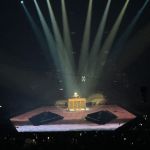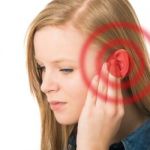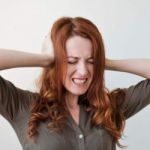Signs of Noise Induced Hearing Loss

WHAT IS NOISE-INDUCED HEARING LOSS?
Hearing is a complex process that — through the sensitive structures of the ear all the way to the brain — involves transforming vibrations from our environment into meaningful sound. Exposure to sounds that are too loud for too long can damage this delicate system, which results in noise-induced hearing loss (NIHL).
Exposure to noise is part of our everyday lives. From mowing the lawn, to listening to music, we are putting a strain on our ears.
While immediate hearing damage can result from sudden loud noises (acoustic trauma), NIHL is also caused by repeated and extended exposure to louder sounds. The World Health Organization (WHO) recommends reducing your average leisure noise exposure to 70dB over a 24-hour period. As sounds get louder, your exposure time should decrease. According to health survey data collected from hearing tests, nearly 24% of adults aged 20 to 69 show signs that suggest NIHL.

Most of these items are household items that you use everyday! Would you expect them to be a danger to your hearing? In small doses, they aren’t. However, if you find yourself in a situation where the noise level is above 70dB constantly, you need to take proper precautions to protect your hearing!

Most noise-induced hearing loss is preventable. By taking precautions to minimize your exposure to loud noise, you can significantly reduce your risk.
• Be aware of sources of harmful noise.
• Wear ear protection when exposed to harmful noise.
• Distance yourself from the source of the noise.
• Reduce the volume and length of time spent using personal listening devices.
• Give your ears a break in quiet spaces whenever possible.
AUDIOLOGISTS CAN HELP
If you are concerned you may have noise-induced hearing loss (NIHL), consult an audiologist.
Audiologists are health professionals who can assess and manage a broad range of hearing and balance disorders in people of all ages. They can address NIHL, as well as provide tools and strategies to help prevent further hearing loss and work with you to optimize your hearing health.
Noise-induced hearing loss (NIHL) can be difficult to detect early on as it often happens gradually. In some cases, the damage to our ears from noise exposure is temporary. However, left unaddressed, noise exposure can lead to more serious and permanent hearing loss.
Signs of NIHL Include:
• Ringing in your ears, known as tinnitus.
• Difficulty understanding someone who is talking from 3 feet away.
• Difficulty understanding speech in background noise.
• Speech sounding muffled after leaving a noisy area.
• A feeling of pain or fullness in your ears.
What is the criterion level?
As the sound level increases above the criterion level, Lc, the allowed exposure time must be decreased. The allowed maximum exposure time is calculated by using an exchange rate, also called a “dose-trading relation” or “trading ratio.” The exchange rate is the amount by which the permitted sound level may increase if the exposure time is halved.
There are two types of exchange rates currently in use: 3 dBA exchange rate or the “3 dB rule,” and 5 dBA exchange rate or the “5 dB rule.” These two exchange rates, with criterion levels of 85 dBA and 90 dBA, give two different sets of exposure guidelines, but only 85 dBA is shown as it is the most common and applicable here in Saskatchewan.
The 3 dBA exchange rate is more stringent. For example, the maximum permitted duration for a 100 dBA noise exposure in the 3 dBA exchange rate is 15 minutes. With the 5 dBA exchange rate, it is one hour.
Most experts recognize the 3 dB rule as more logical. They argue that it is logical that if the sound level is doubled, then the allowable exposure time should be cut in half. It follows, then, that the allowable time should be halved for every 3 dBA increase in sound level. This is precisely the case if the 3 dBA exchange rate is used.

DON'T FORGET
Not only do we have the answers to your questions, but we also provide solutions. We can get you fitted with comfortable and functional hearing protection for the work place. If you’re not happy with the PPE your company provides, let them know and maybe we can supply for them, or you can pick up a set just for yourself and lead by example. Your ears a worth it!


